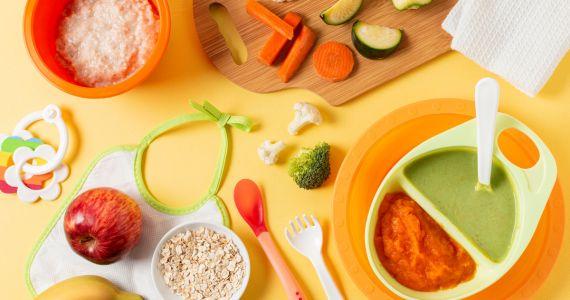When it comes to choosing the right baby feeding accessories, parents are often overwhelmed by the variety of materials available. Two of the most popular choices today are glass and silicone. Each comes with its own set of benefits and considerations, especially when factoring in safety, durability, hygiene, and ease of use.
In this article, we will explore the key differences between glass and silicone baby feeding accessories to help you make an informed choice that suits your baby’s needs and your lifestyle.
Safety: A Top Priority for Parents
Safety is the first concern for any parent selecting feeding accessories.
Glass baby feeding accessories are made from heat-resistant, tempered glass that does not leach chemicals into food. This makes them a safe and non-toxic option. Glass is also free from BPA, phthalates, and PVC—chemicals that are often linked to health risks in plastics.
On the other hand, silicone feeding accessories are made from food-grade silicone, which is soft, flexible, and also free of harmful chemicals. Unlike plastic, high-quality silicone is stable under a wide range of temperatures and does not react with food.
Both materials are considered safe, but the edge may go to silicone when it comes to being unbreakable and gentle, especially for toddlers learning to feed themselves.
Durability and Resistance
Durability plays a vital role in choosing baby feeding accessories that last.
Glass is highly durable when handled with care but can break or shatter if dropped. This can be a significant concern, especially with babies who are likely to throw or drop items during feeding time.
Silicone, on the other hand, is nearly indestructible. It doesn’t crack, chip, or break, making it ideal for everyday use. Parents who are constantly on the go often prefer silicone because it can withstand being dropped, twisted, or squeezed without damage.
So, if durability and child-proof functionality are your priorities, silicone feeding accessories are the more reliable option.
Hygiene and Cleaning
Keeping baby feeding accessories clean is essential to your baby's health.
Glass has a non-porous surface, which means it doesn't absorb food smells or colours. This makes it easy to sterilise and clean, either by hand or in the dishwasher. Glass items can also withstand high heat, allowing for thorough sanitisation through boiling or steam sterilisation.
Silicone is also hygienic, but it’s slightly more porous than glass. While most high-quality silicone feeding accessories are dishwasher-safe and heat-resistant, lower-grade silicone may absorb odours over time. However, cleaning is generally easy and hassle-free.
In summary, both materials are hygienic when cared for properly, but glass may be slightly superior in terms of resisting odours and stains.
Portability and Practical Use
Parents today are often on the move, and portability is a key factor when choosing feeding gear.
Glass feeding accessories are heavier and more fragile, making them less ideal for travel. Carrying glass bottles or bowls increases the risk of breakage, and they add weight to your baby bag.
Silicone feeding accessories, however, are lightweight, flexible, and easy to pack. Their shatterproof design makes them ideal for travel or outdoor use. Silicone bibs, bowls, and spoons can be folded or squashed into a bag without any worry.
For parents who value convenience and flexibility, silicone is often the go-to material.
Environmental Impact and Longevity
Eco-conscious parents often consider the environmental impact of the products they use.
Glass is made from natural materials and is 100% recyclable. It can be reused over generations if maintained properly. Its longevity and recyclability make it an environmentally friendly choice, especially for those seeking a plastic-free home.
Silicone, while not as easily recyclable as glass, is still a better option than plastic. It is reusable, long-lasting, and produces less waste in the long run. Some brands even offer recycling programmes for used silicone products.
Both materials outperform plastic when it comes to environmental sustainability, but glass has a slight edge in full recyclability.
Which Is Better for Your Baby?
Choosing between glass and silicone baby feeding accessories depends on your specific needs and lifestyle.
If you prioritise hygiene, sustainability, and are comfortable with being cautious about breakage, glass might be the right choice. It offers a clean, classic solution for parents who usually feed their baby at home.
If you're looking for flexibility, durability, and ease of use on the go, silicone baby feeding accessories are a more practical choice. They’re lightweight, child-safe, and ideal for toddlers beginning to self-feed.
Ultimately, many parents find that a mix of both materials works best—using glass for home and silicone for outings.
Conclusion
The choice between glass and silicone baby feeding accessories boils down to what matters most to you: safety, convenience, durability, or sustainability. Both materials are excellent alternatives to plastic and offer peace of mind to health-conscious parents.
With a little research and understanding of your baby's feeding habits, you can confidently choose the accessories that will make mealtime safer and more enjoyable—for both you and your child.
